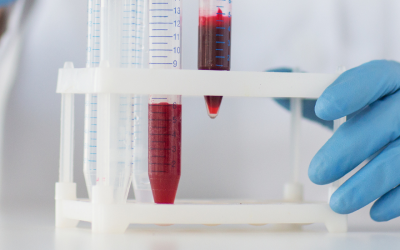
Why the Earliest Days of Pregnancy Matter More Than We Think: A Brief Overview of Periconceptional Pathophysiology and Assisted Reproductive Technology
There is growing evidence that studies examining pregnancy and its complications need to start early within the pregnancy to fully understand the nature of preeclampsia. Key gestational milestones, which have lasting effects during and after pregnancy, occur in the periconceptional period: the timeframe just before conception and extending through the first few weeks of pregnancy. These early pregnancy milestones include:
- decidualization (the process where the cells of the uterine lining (endometrium) transform to prepare for and support a pregnancy),
- corpus luteum activity (a temporary endocrine gland that forms in the ovary after ovulation and produces progesterone, estrogen, and inhibin),
- trophoblast-endometrial interaction (a critical process during which the specialized cells that provide nutrients to the embryo and develop into a large part of the placenta attach to and invade the uterine lining, or endometrium, to establish a pregnancy)
- immune cell regulation (a complex process that involves a fine balance between the maternal immune system's need to defend against infection and its ability to tolerate the semi-foreign fetus)
All of these processes are critical for successful implantation and pregnancy maintenance. The growing use of assisted reproductive technologies (ART), which can modify these early physiological processes, has further underlined the importance of the periconceptional window in influencing pregnancy outcomes. ART involves procedures such as in vitro fertilization (IVF), the use of fertility medication, intracytoplasmic sperm injection (ICSI), or cryopreservation/freezing of gametes and embryos. Surrogacy often uses ART. The use of ART increases the risk of preeclampsia.
Recent studies reveal that dysregulated decidualization, the process in which endometrial stromal cells transform to prepare the uterus for pregnancy, may be an underlying cause of preeclampsia. Women who later developed preeclampsia demonstrated lower circulating IGFBP-1 gene levels, a gene marker of decidualization, in early pregnancy tissue samples. The corpus luteum plays a critical role in early pregnancy sustenance and mediation of cardiovascular adaptations to pregnancy through the secretion of factors such as relaxin. Evidence from IVF studies indicate that in programmed frozen embryo transfer cycles, in which a corpus luteum does not form and exogenous hormone administration occurs, women exhibit cardiovascular dysregulation and increased preeclampsia risk.
ART now accounts for up to 6% of pregnancies in some countries, resulting in a 1.5-2 fold increased risk for perinatal mortality, preeclampsia, preterm birth, low birth weight, and placental abnormalities. Frozen embryo transfer doubles the risk of severe maternal bleeding requiring transfusion compared to fresh embryo transfer. Additionally, babies conceived from frozen embryos are significantly larger, with frozen-embryo siblings being at least 70% bigger than their fresh-embryo counterparts. While contrasting ART approaches could shed light on periconceptional physiology and guide future improvements, current research offers limited insight, thus requiring further investigation.
Future research should focus on understanding what a healthy uterine environment looks like before conception, including how it prepares for implantation, while accounting for cycle variability and maternal factors like BMI, age, and ethnicity. Using lab-grown “organoids” to model the uterus and placenta could reveal how early changes lead to later complications in pregnancy.
Take Home Message: The periconceptional period is a critical time frame in which pregnancy maintenance, immune interactions, and epigenetic programming establish the foundation for pregnancy health. Current assisted reproductive technologies (ART) may inadvertently disrupt these processes, underscores the need for closer evaluation and optimization to improve maternal health outcomes globally.
Citation: Roberts, J. M., Burton, G. J., Conrad, K. P., Luke, B., Mann, M. R., Moffett, A., & Jancsura, M. K. (2025). An Overview of Periconceptional Pathology and Pathophysiology: Where do we go next? Placenta, 168, 98–110. https://doi.org/10.1016/j.placenta.2025.06.010
Link: https://doi.org/10.1016/j.placenta.2025.06.010
About Research Roundup
Each quarter, our team of science writers reviews the most current research studies related to hypertensive disorders of pregnancy and summarizes those studies of greatest interest and potential impact to our community, including research studies related to risk assessment, diagnosis, prevention, and treatment. Special thanks to our volunteer research team including Dr. Sig-Linda Jacobson, Dr. Jennifer Mitchell, Dr. Julie Reynolds, Amanda Yang, and Simren Gupta who make Research Roundup possible, and to our Patient Advisory Council, who reviews these materials from the patient perspective.
Related Articles

Your story is needed to improve outcomes for moms like you. Add your voice to critical preeclampsia research to ensure that every story is heard.

Frequently asked questions about the Preeclampsia Registry, a patient-driven registry and biobank.

The Preeclampsia Foundation offers research funding, study recruitment, and other patient engagement services to researchers.

We provide research grant funding to advance progress towards detection, prevention, or treatment of preeclampsia, HELLP syndrome, and other hypertensive disorders of pregnancy.

Hypertensive disorders of pregnancy significantly increase your risk of developing long-term heart problems. A careful review of blood pressure elevations during and after pregnancy may assist in iden...

Hypertensive disorders of pregnancy (HDP) can affect different groups of women in different ways, and even though we know this happening, we don't fully understand why. There are many factors, like bi...

It is known that chronic hypertension and high BMI (body mass index) are risk factors for hypertensive disorders of pregnancy (HDP). Studies documenting this risk have usually assessed blood pre...

Several biomarker tests are under development to predict or diagnose preeclampsia. While none of these tests are yet widely accepted in U.S. clinical practice, two FDA-approved tests are available in...

Shattered Expectations: What happens after the unexpected? You may have received the unexpected news that you have preeclampsia or another hypertensive disorder of pregnancy. Maybe labor complic...



